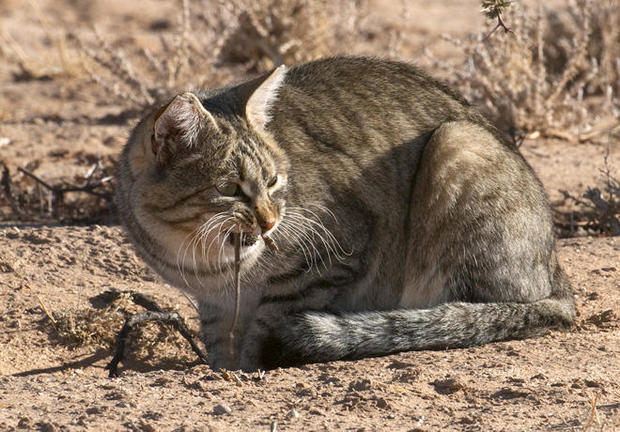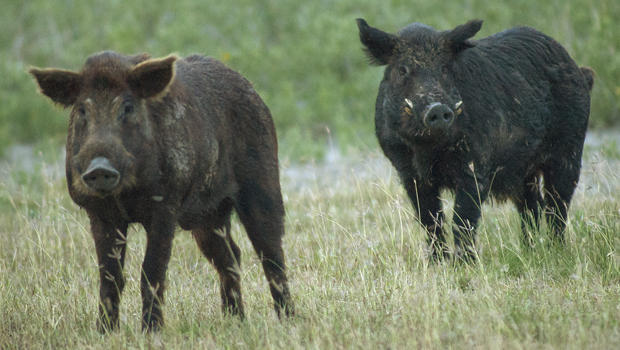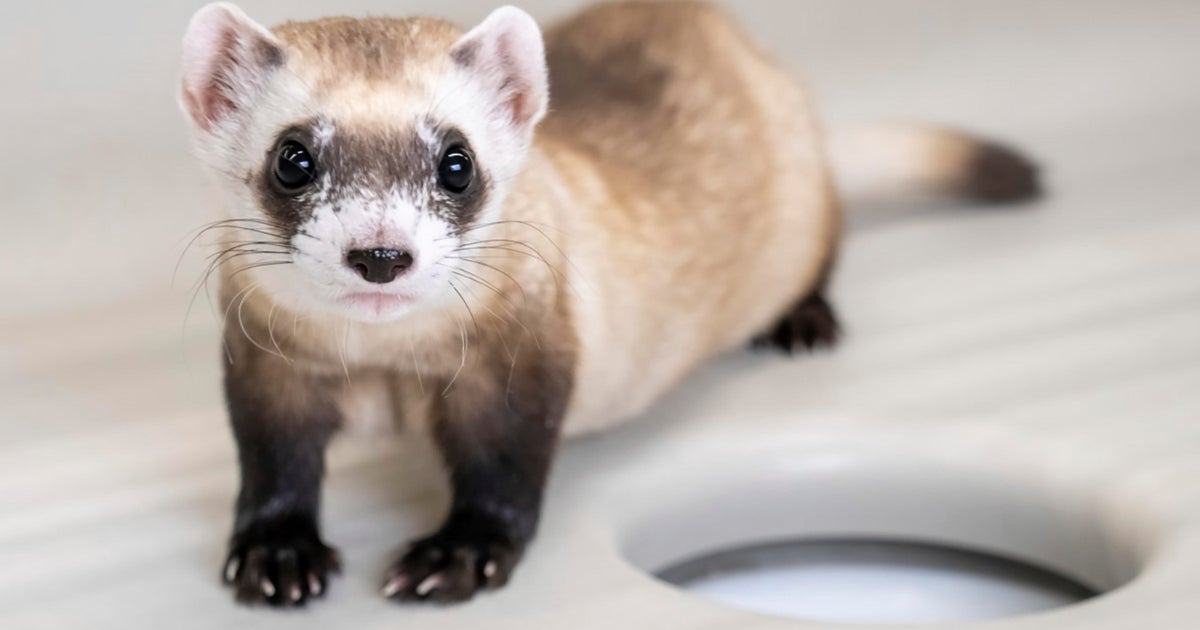Nature up close: Feral animals
By "Sunday Morning" contributing videographer Judy Lehmberg.
The burros roaming Arizona's Black Mountains remind visitors of a simpler time in the Old West, a time when human populations were lower and wildlife was abundant. But those times are gone. Today when we look closer at these burros, a problem with no easy answers becomes obvious.
Humans have benefited tremendously from the domestication of animals. Burros (Spanish for donkeys) were first domesticated from the African ass at least 5,000 years ago. They proved to be a very hardy and helpful companion, especially to desert dwellers. Today they are still commonly used to haul heavy loads, primarily in China, Africa and Latin America.
In the U.S., the image of a gold prospector with a burro carrying his worldly possessions is one ingrained in our memory of the West. This image is based on reality because these hardy animals can survive long treks through the desert without much water and less food than a horse. When the gold diggings played out, some prospectors abandoned their burros to fend for themselves, which they readily did.
When animals become feral due to human neglect or accidental release, they can cause serious problems. Feral animals are domesticated species released into the wild. Many land managers in the West (including the Black Mountain area of northwest Arizona, a fragile desert environment susceptible to over-grazing) consider burros to be one of those problem species.
The epitome of a successful feral animal, the Black Mountain burros have no natural enemies. They have proliferated to the point the Bureau of Land Management (BLM) has tried burro population control. Because people empathize with burros, euthanasia is not an attractive option. Recently the BLM, with financial support from the Humane Society, began testing burro birth control methods, which are expensive.
Wildlife, cattle, and feral burros compete for the same limited food and water supply. However, feral burros don't do as much damage that some other feral animals do.
Feral and outside domestic cats do exponentially more damage to wildlife than burros, killing between 1 and 4 billion birds every year in the United States, as well as between 6 and 22.3 billion small mammals. Cats were originally domesticated about 10,000 years ago from the wildcat native to Africa and southern Asia.
Surprisingly, DNA studies have proven domestic and wild cats were basically identical until about 700 years ago, when humans began selective breeding for coat color and markings. They are little changed today, and can still successfully reproduce with wildcats.
Feral hogs are much more of a habit-altering animal than burros. Huge numbers of small animals, plants, and eggs are eaten by feral hogs, who also damage habitat with their rooting behavior. Feral hogs descended from hogs intentionally released by farmers so they could feed on acorns and other forest mast. In the fall, the hogs were rounded up to be butchered, but some escaped recapture and have been proliferating successfully. In the 1900s the Eurasian or Russian boar was released in the U.S. for sport hunting. These wilder, stronger animals were dominant in breeding with escaped domestic pigs, so their genes often predominate in the feral population.
Estimates vary but the current population of feral hogs in the U.S. is between five and six million -- 2.6 million in Texas alone. The U.S. spends about $1.5 billion on damages and control costs. Feral hogs root up the ground like a plow causing major damage to property, native species, crops and ecosystems. Trapping and shooting these intelligent animals has not been successful. Sodium nitrite and warfarin poisons have also been tried with limited success.
Control measures for feral animals must be palatable to the public. Euthanasia for burros and cats would not be acceptable to many people. Spay-and-release has been tried on cats, but it is expensive and ineffective because of the reproductive capacity of cats.
Hopefully with the improvement of birth control technology, burro numbers can be controlled without resorting to more drastic measures, and visitors can enjoy seeing them roam wild in Arizona's Black Mountains.
See also:
Judy Lehmberg is a former college biology teacher who now shoots nature videos.
For more info:
- Judy Lehmberg (Official site)
- Judy Lehmberg's YouTube Channel
To watch extended "Sunday Morning" Nature videos click here!





